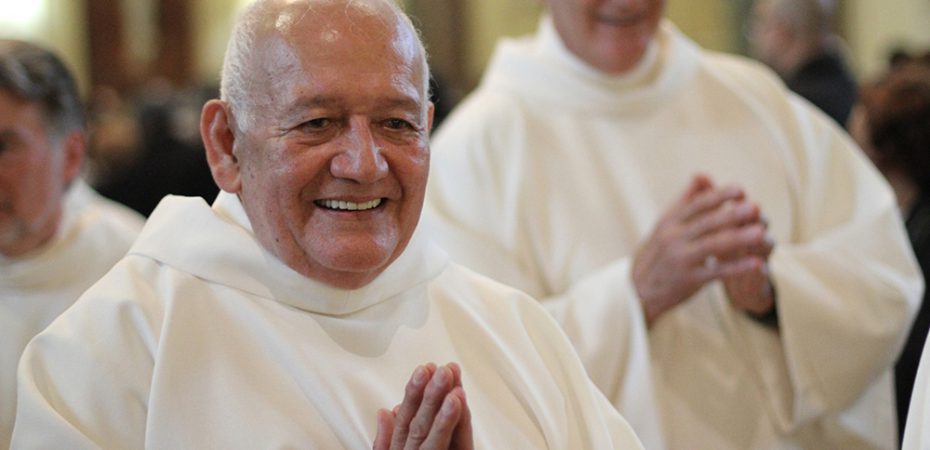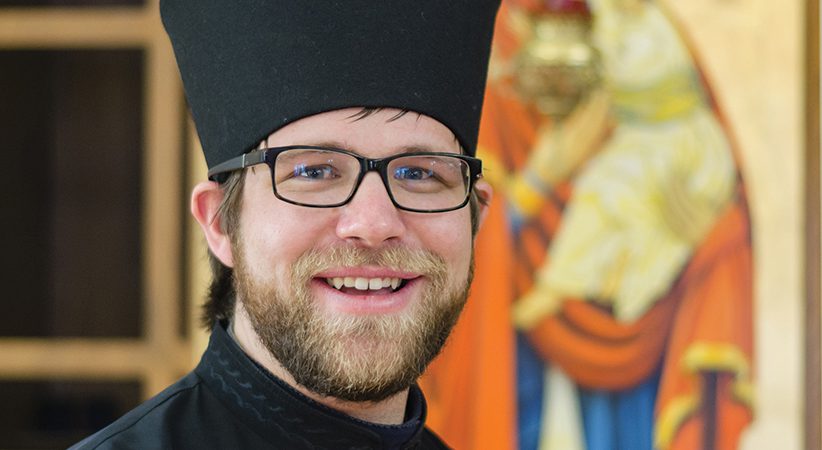Priesthood of the Diaconate
In baptism, all are called to the priesthood — even deacons
Deacon Dominic Cerrato Comments Off on Priesthood of the Diaconate
 In an earlier column, I wrote of the universality of the diaconate within all three grades of holy orders. There, I maintained that, properly understood and integrated, this commonality can serve to strengthen the unity of holy orders. This is because, on the deepest level of their being, priests and bishops are still deacons, albeit now lived out in a way proper to their respective order.
In an earlier column, I wrote of the universality of the diaconate within all three grades of holy orders. There, I maintained that, properly understood and integrated, this commonality can serve to strengthen the unity of holy orders. This is because, on the deepest level of their being, priests and bishops are still deacons, albeit now lived out in a way proper to their respective order.
While a proper understanding of the universality of the diaconate can help strengthen the unity of holy orders, it seems to me that the same might be true of the priesthood, though not in the same respect. Where all three grades of holy orders ontologically share in the diaconate, only the presbyterate and episcopate share in the ministerial priesthood. Still, if carefully nuanced, it’s quite possible to speak of the “priesthood of the diaconate.”
At first blush it seems odd to speak of the diaconate as participating in Christ’s priesthood, because the Church sees these as separate and distinct orders. While this distinction is essential and must be maintained to ensure the integrity of the three grades of holy orders, there is a certain sense where the diaconate and presbyterate both participate in the one priesthood of Christ, each in their own way. To better appreciate what I mean here, consider the teaching that there are two participations in the one priesthood of Christ: the common priesthood and the ministerial priesthood (cf. Catechism of the Catholic Church, Nos. 1546-1547). The common priesthood, sometimes called the priesthood of the laity, arises out of baptism. For those ordained to the presbyterate, this common priesthood is further specified and enriched by ordination to the ministerial priesthood.
It’s interesting to note that while the common priesthood is not swallowed up by the ministerial priesthood, the Church considers the two as separate and distinct from each other. The move from one kind of participation to the other occurs at ordination, indicating that holy orders impacts how participation in the one priesthood of Christ is lived out. If it is true that ordination impacts how participation is lived out, and if deacons receive holy orders, is it not reasonable to conclude that there may well be a hitherto third undiscovered participation in the one priesthood of Christ: a diaconal participation?
Pope St. John Paul II acknowledged this diaconal participation when, in his catechesis on the diaconate (general audience, Oct. 20, 1993), he taught: “The catechesis I have given on the diaconate, to complete the picture of the ecclesiastical hierarchy, thus highlights what is most important in this order, as in those of the presbyterate and the episcopate: a specific spiritual participation in the priesthood of Christ and the commitment to a life in conformity to him by the action of the Holy Spirit. … Deacons, therefore, are called to participate in the mystery of the cross, to share in the Church’s sufferings, and to endure the hostility she encounters, in union with Christ the Redeemer. This painful aspect of the deacon’s service makes it most fruitful.”
Here, John Paul indicates that there is, in fact, a unique diaconal participation in the one priesthood of Christ. Insofar as a priest is one who offers sacrifice, the deacon’s gift of self in the exercise of his ministry can be, and should be, a gift that takes on the form of sacrifice. This means that the exercise of our diaconate can never be reduced to doing something, even if that something is holy. Such a form of ministry can become cold and depersonalized. Instead, it’s someone we give — our very selves. This moves ministry away from a purely functional approach to a relational approach, where we connect person to person, soul to soul. This not only makes Christ the Servant present but, because Christ is one, we make visible the invisible crucified and risen Lord, the Christ who came not to be served, but to serve (diaconate) and give his life in ransom for the many (priesthood).
DEACON DOMINIC CERRATO, Ph.D., is editor of Deacon Digest and the director of diaconal formation for the Diocese of Joliet, Illinois. He is founder of Diaconal Ministries, where he gives national presentations and retreats to deacons and diaconal candidates.



